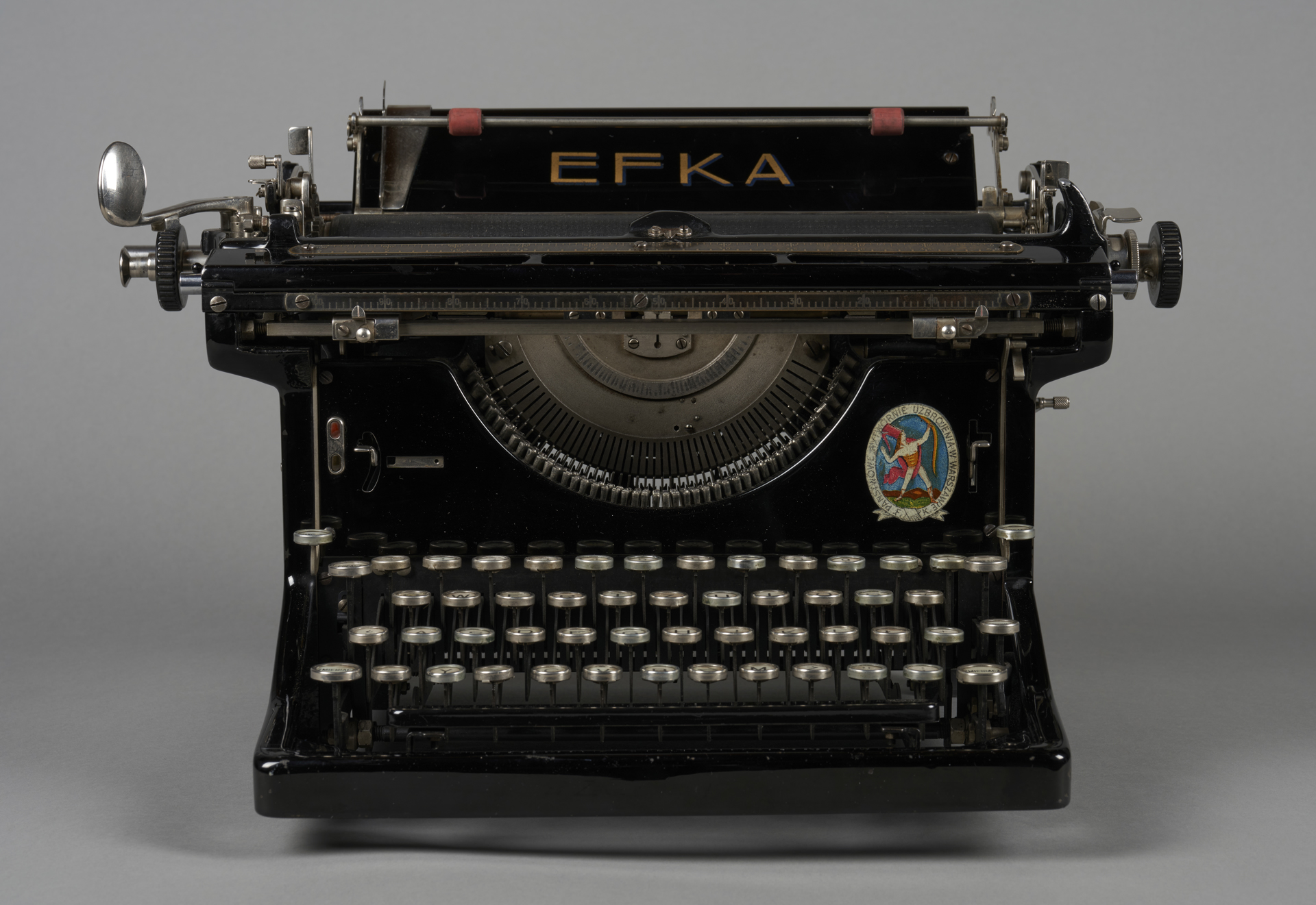
EFKA C 28 typewriter
Państwowe Wytwórnie Uzbrojenia, Wytwórnia nr 1 - Fabryka Karabinów, Warszawa, / 1935Creator
Państwowe Wytwórnie Uzbrojenia, Wytwórnia nr 1 - Fabryka Karabinów, Warszawa
Time and place of creation
Time:
1935
Place:
Poland
The EFKA model C 28 office typewriter of the type-bar type was designed to automate the writing process and make office work more efficient. The device was manufactured by Fabryka Karabinów w Warszawie (FK), which was part of Państwowe Wytwórnie Uzbrojenia (PWU).
Model C 28 is an example of a manual, dual-register typewriter with a short platen, slightly extending beyond the body outline and installed on a moving carriage. The different models made by FK got their names from the platen length in centimetres. The device body was painted black. The machine stood on four short, cuboid rubber feet. The side and rear walls were full, while the side walls were fitted with rectangular glass windows in metal frames, which make it possible to see the type bar mechanism. Above the keyboard on the left is a switch for changing the two-colour tape. The keyboard has a standard central European QWERTZ layout with Polish characters. The keyboard has four rows with 46 round keys with characters on a white background and eight function keys, some of which are described in Polish. In the right-hand side corner of the front wall is a PWU logo, which presents a standing highwayman in a red coat and a tall hat, holding a drawn bow in his hand. The logo was placed on different products of the PWU group, such as bicycles, carbines, and measurement instruments. It was accompanied by acronyms of the different factories in the PWU group. The logo was designed by Władysław Skoczylas, a painter and woodcut artist from Wieliczka. The image of the highwayman came from a series of watercolours. The series was awarded the bronze medal at the Olympic Contest of Art and Literature, which accompanied the summer Olympic Games in Amsterdam in 1928. With his works devoted to the Highlanders and highlander culture, Skoczylas contributed to building a convention for how the group was perceived and presented in Polish culture. The painter’s work was strongly influenced by the interest in the Podhale culture of the Young Poland art movement of the turn of 19th and 20th centuries, which sought the origins of the national culture in the region. Not only did the artist make numerous illustrations for the books on the Highlander culture by Stefan Żeromski, Jan Kasprowicz, and Kazimierz Przerwa-Tetmajer, but he also created a series of woodcuts titled Teka góralska (The Highlander Portfolio). His work coincided with the art deco period, during which attempts were made to create a national style in design using highlander themes, among others. The image designed by Skoczylas for the PWU after World War II contributed to setting apart the Łucznik (Eng. “archer”) brand.
Author: Filip Wróblewski
EFKA C 28 typewriter
Państwowe Wytwórnie Uzbrojenia, Wytwórnia nr 1 - Fabryka Karabinów, Warszawa, / 1935Creator
Państwowe Wytwórnie Uzbrojenia, Wytwórnia nr 1 - Fabryka Karabinów, Warszawa
Time and place of creation
Time:
1935
Place:
Poland











